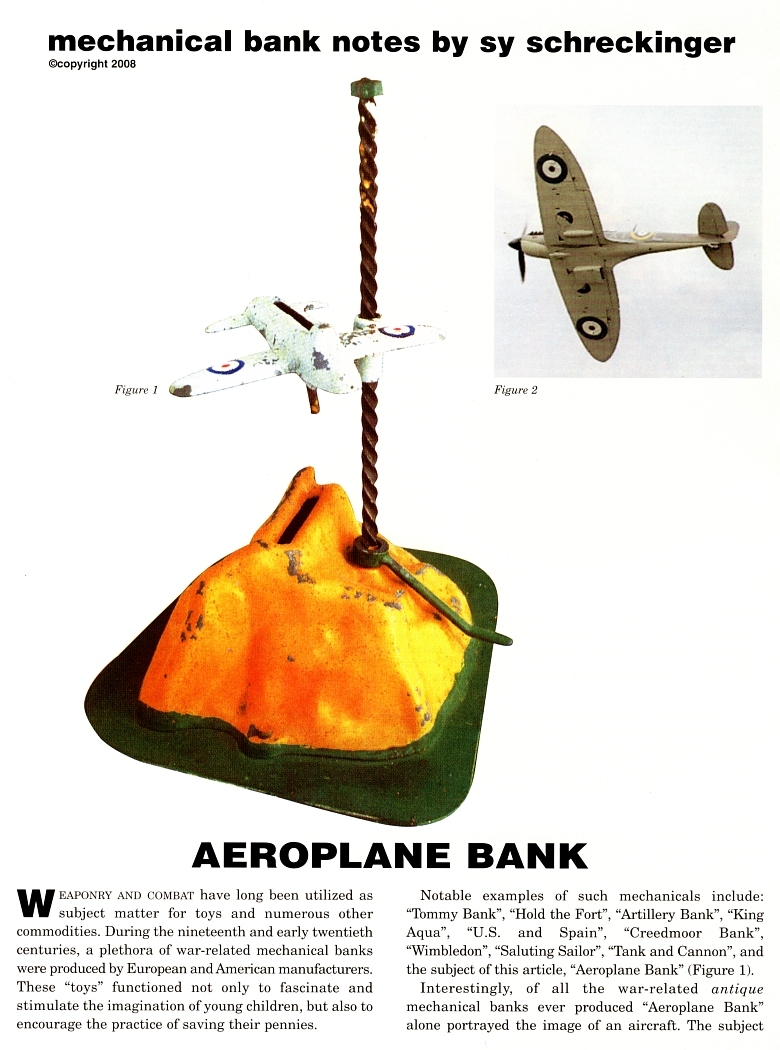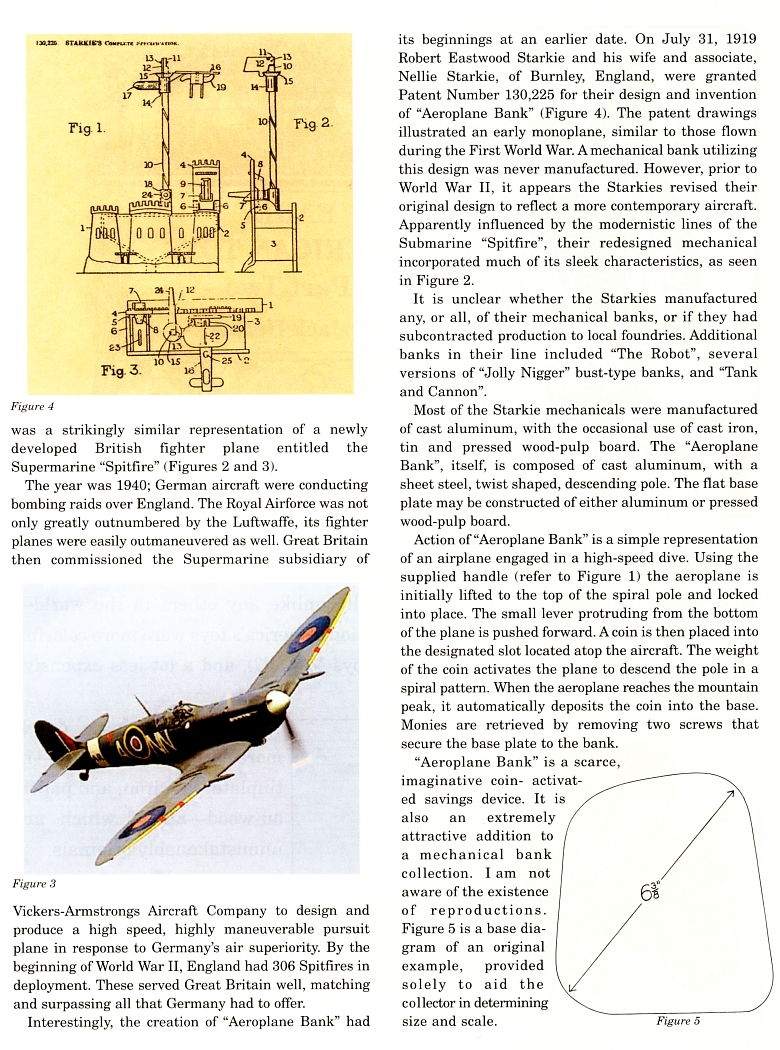|
Aeroplane Bank
by Sy Schreckinger – ANTIQUE TOY WORLD Magazine – November, 2008
Weaponry and combat have long been utilized as
subject matter for toys and numerous other commodities. During the
nineteenth and early twentieth centuries, a plethora of war-related
mechanical banks were produced by European and American manufacturers.
These "toys" functioned not only to fascinate and stimulate the
imagination of young children, but also to encourage the practice of
saving their pennies.
Notable examples of such mechanicals include: "Tommy Bank", "Hold the
Fort", "Artillery Bank", "King Aqua", "U.S. and Spain", "Creedmoor Bank",
"Wimbledon", "Saluting Sailor", "Tank and Cannon", and the subject of this
article, "Aeroplane Bank" (Figure 1).
Interestingly, of all the war-related antique mechanical banks ever
produced "Aeroplane Bank" alone portrayed the image of an aircraft. The
subject was a strikingly similar representation of a newly developed
British fighter plane entitled the Supermarine "Spitfire" (Figures 2 and
3).
The year was 1940; German aircraft were conducting bombing raids over
England. The Royal Airforce was not only greatly outnumbered by the
Luftwaffe, its fighter planes were easily outmaneuvered as well. Great
Britain then commissioned the Supermarine subsidiary of Vickers-Armstrongs
Aircraft Company to design and produce a high speed, highly maneuverable
pursuit plane in response to Germany's air superiority. By the beginning
of World War II, England had 306 Spitfires in deployment. These served
Great Britain well, matching and surpassing all that Germany had to offer.
Interestingly, the creation of "Aeroplane Bank" had its beginnings at
an earlier date. On July 31, 1919 Robert Eastwood Starkie and his wife and
associate, Nellie Starkie, of Burnley, England, were granted Patent Number
130,225 for their design and invention of "Aeroplane Bank" (Figure 4). The
patent drawings illustrated an early monoplane, similar to those flown
during the First World War. A mechanical bank utilizing this design was
never manufactured. However, prior to World War II, it appears the
Starkies revised their original design to reflect a more contemporary
aircraft. Apparently influenced by the modernistic lines of the Submarine
"Spitfire", their redesigned mechanical incorporated much of its sleek
characteristics, as seen in Figure 2.
It is unclear whether the Starkies manufactured any, or all, of their
mechanical banks, or if they had subcontracted production to local
foundries. Additional banks in their line included "The Robot", several
versions of "Jolly Nigger" bust-type banks, and "Tank and Cannon".
Most of the Starkie mechanicals were manufactured of cast aluminum,
with the occasional use of cast iron, tin and pressed wood-pulp board. The
"Aeroplane Bank", itself, is composed of cast aluminum, with a sheet
steel, twist shaped, descending pole. The flat base plate may be
constructed of either aluminum or pressed wood-pulp board.
Action of "Aeroplane Bank" is a simple representation of an airplane
engaged in a high-speed dive. Using the supplied handle (refer to Figure
1) the aeroplane is initially lifted to the top of the spiral pole and
locked into place. The small lever protruding from the bottom of the plane
is pushed forward. A coin is then placed into the designated slot located
atop the aircraft. The weight of the coin activates the plane to descend
the pole in a spiral pattern. When the aeroplane reaches the mountain
peak, it automatically deposits the coin into the base. Monies are
retrieved by removing two screws that secure the base plate to the bank.
"Aeroplane Bank" is a scarce, imaginative coin-activated savings
device. It is also an extremely attractive addition to a mechanical bank
collection. I am not aware of the existence of reproductions. Figure 5 is
a base diagram of an original example, provided solely to aid the
collector in determining size and scale.
|


